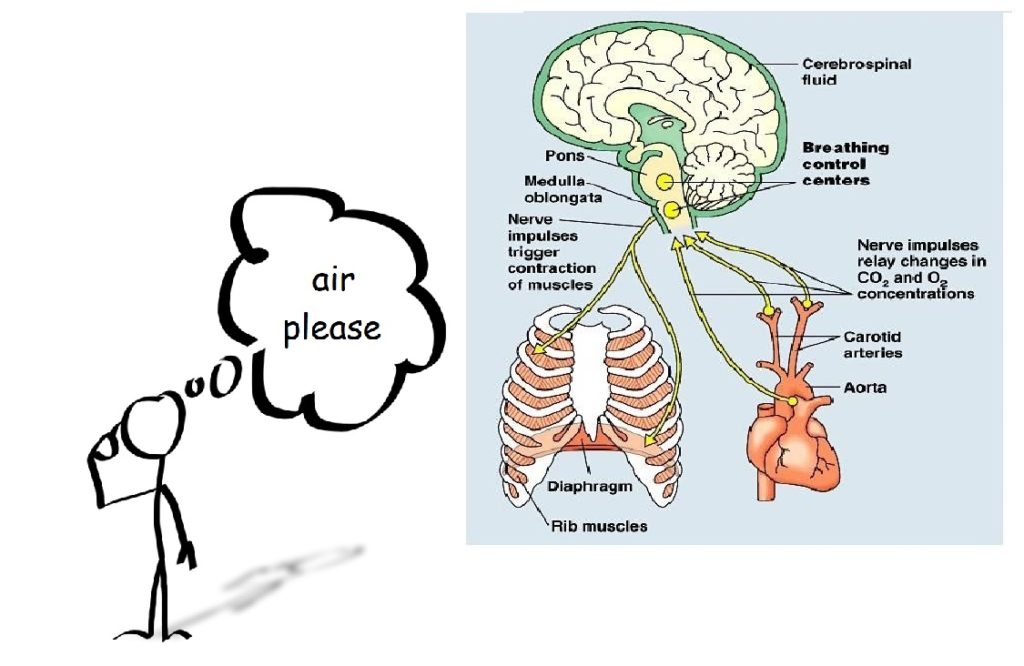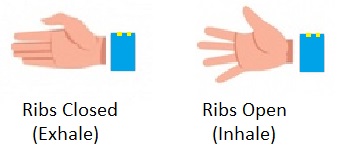Jamea Sale, Contributing Author, DevelopingVoices.blog
Part 1 of The human voice: an instrument in residence looked at the voice as a localized instrument in the form of the larynx and vocal folds [link to previous article]. Of course, the vocal folds do not initiate vibration of their own accord. There is energy stimulating the folds to vibrate! That energy is in the form of breath!
The Human Thoracic Cavity
The thoracic cavity can be thought of as a container holding the lungs and heart. The container is bounded by the ribs (and muscle and tissue). The ribcage, while structural, is also flexible having tissue and muscles between each rib that function to open and close the ribs. The diaphragm is situated at the floor of the thoracic cavity, and it works in unison with the ribs to draw air in and out of the lungs.

Human Lungs and Diaphragm
The diaphragm is an elastic sheath muscle the spans the bottom of the rib cage. Think of the diaphragm muscle as the “divider” of the torso. The upper torso (thoracic cavity) contains the vital organs of the heart and lungs, and the lower torso contains the viscera. The diaphragm is parachute-shaped, and it descends on inhalation and ascends on exhalation.

When the brain sends the message, “I need air!” a complex set of activity is triggered:
- Inhalation: The thoracic cavity must expand:
- The rib cage muscles are triggered open
- The diaphragm sheath muscle descends (contracts).
This causes a decrease in lung pressure in comparison to the atmosphere of the thoracic cavity, and air rushes into the airway.
- Exhalation: an elastic recoil of the lung tissue
occurs. The thoracic cavity relaxes.
- The rib cage muscles close, returning to resting position.
- The diaphragm muscle ascends.
This causes a decrease in lung volume and results in increased pressure in comparison to the thoracic atmosphere so that air rushes out of the airway.
In physics, this is directly related to Boyle’s Law. Check out this easy to understand visual explanation on Youtube: Boyles Law from Respiratory System – Anatomy & Physiology Onlinehttps://youtu.be/q6-oyxnkZC0.
Breath trivia:
The diaphragm descends anywhere from 1.5 cm at rest to 6-10 cm during exercise.
There is no air going into the abdominals! The role of the abs is to relax and allow the thoracic cavity to be more spacious.
Breathing allows you to take in the oxygen and expel carbon-dioxide waste. But when you exhale, you also breathe out a lot of water. Humans exhale up to 0.59 fluid ounces of water per hour and about four times that amount during exercise.
The right lung is larger than the left lung in humans to accommodate the heart.
If the lungs were opened flat, they would be so big that they would cover the size of a tennis court.
The abdominal muscles required for breathing are also involved in postural support, movement, balance, coughing, urination, vomiting, singing, childbirth, and defecation.
TO DO:
I. Body Mapping the Ribs:
- Place your hands, fingers together, on either side of your torso. Find the lower ribs. Do a long exhale. Notice the ribs drawing together toward the center of the body. As you do a long inhale, notice the rib cage “opening” and lifting. Keep your hands in the same position but move them a few inches away from your body. As you repeat the breathing exercise spread your fingers apart as you inhale and close your fingers together as you exhale.

- Imagine you are holding a pail, one hand on the bottom of the pail and the other on the handle. Lower the handle of the pail as you exhale and inhale as you raise the handle of the pail. Now, place your hands on your low ribs. Imagine the action of the pail handle as you exhale and inhale.

II. Body Mapping the Lungs:
- Stand with a relaxed, upright and regal stature. Allow your jaw to be relaxed and open. Exhale for a count of 4 and inhale for a count of 4. Now release to a slouched position continuing the count-breathing. As you inhale, notice how the breath intake is inhibited by this new position. Return to upright.
- Expel all air in the lungs. Hold this position momentarily (don’t inhale). Now, release your ribs and abs and open your mouth. Simply allow air back into the lungs without “doing” an inhale. Repeat the exercise a few times. Notice that air naturally flows into the lungs due upon release of the muscles of the ribs and abs.
III. Sing!
- Stand with a relaxed, upright and regal stature. Exhale for a count of 4. Inhale, releasing your ribs and abs. Begin an exhale and allow the voice to join the exhalation in a long sigh.
- Repeat the previous exercise, but instead of sighing, try singing a song you like. Allow the breath to initiate the sound of your singing.
Jamea Sale, Director for the Institute for Healthy Singing
Executive Associate Director, William Baker Choral Foundation
Voice Specialist, Allegro Choirs of Kansas City
References:
8 Fun Facts About Lungs | Pulmonary Hypertension News. (2017). Pulmonary Hypertension News. Retrieved 8 January 2019, from https://pulmonaryhypertensionnews.com/2017/12/20/8-fun-facts-lungs/
Bilal M, Voin V, Topale N, Iwanaga J, Loukas M, and Tubbs RS. (2017). The Clinical anatomy of the physical examination of the abdomen: A comprehensive review. Clin Anat. 30(3):352-356.
Heinrich, Jane Ruby. Voice and the Alexander Technique: Active Explorations for Speaking and Singing. Berkeley, CA: Mornum Time, 2005.
Breathing: The Mechanics of Human Breathing | Boundless Biology. (2019). Courses.lumenlearning.com. Retrieved 8 January 2019, from https://courses.lumenlearning.com/boundless-biology/chapter/breathing/
Vennard, William. Singing the Mechanism and the Technic. New York: C. Fisher, 1967.


Leave a Reply
You must be logged in to post a comment.